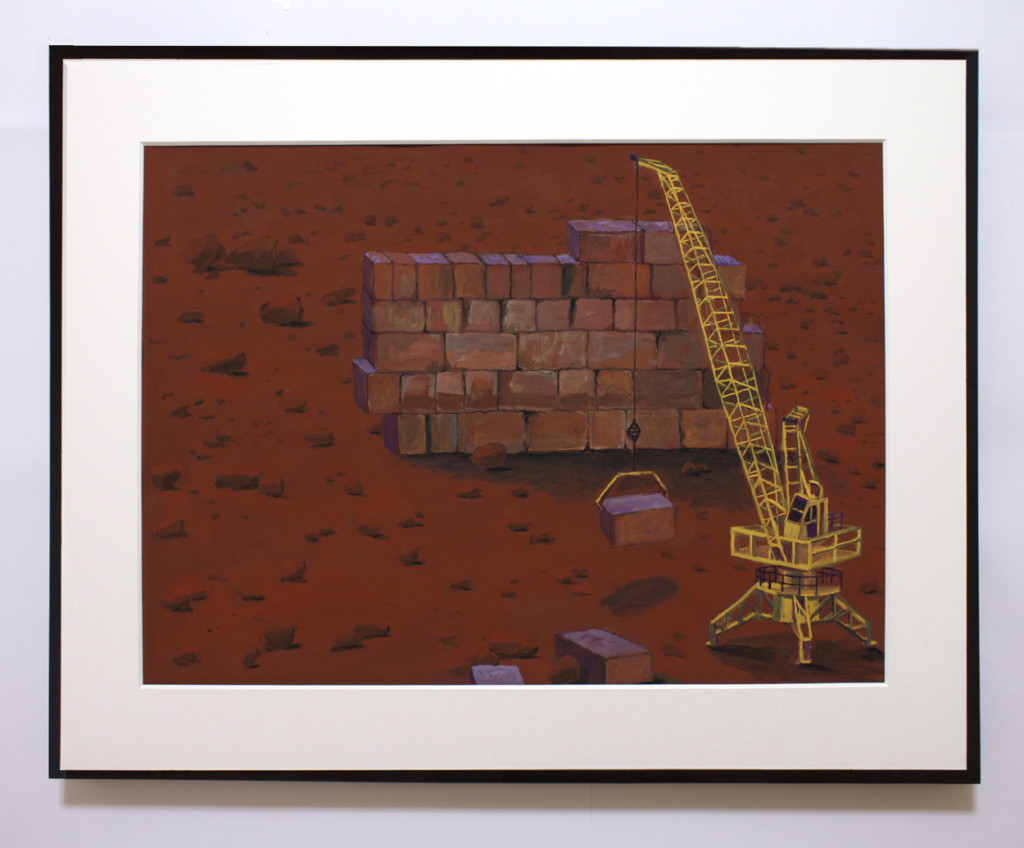MARS WORKS
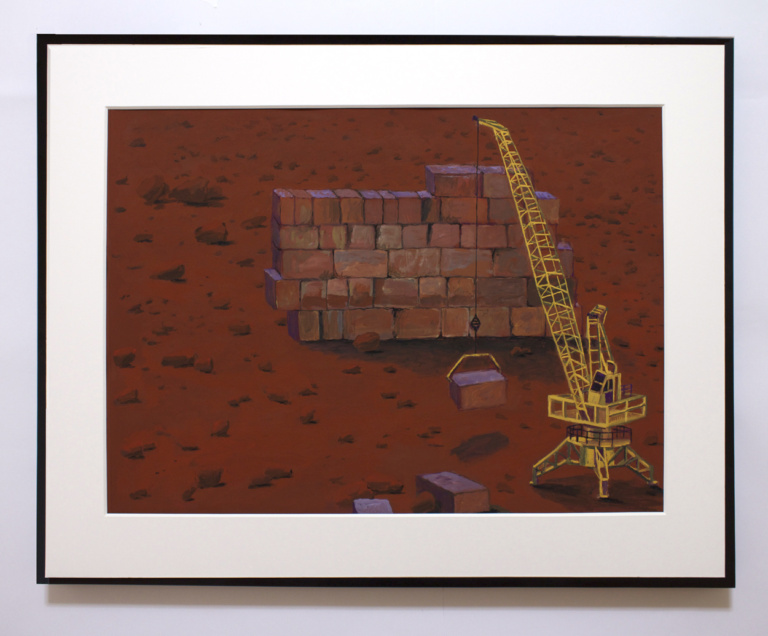
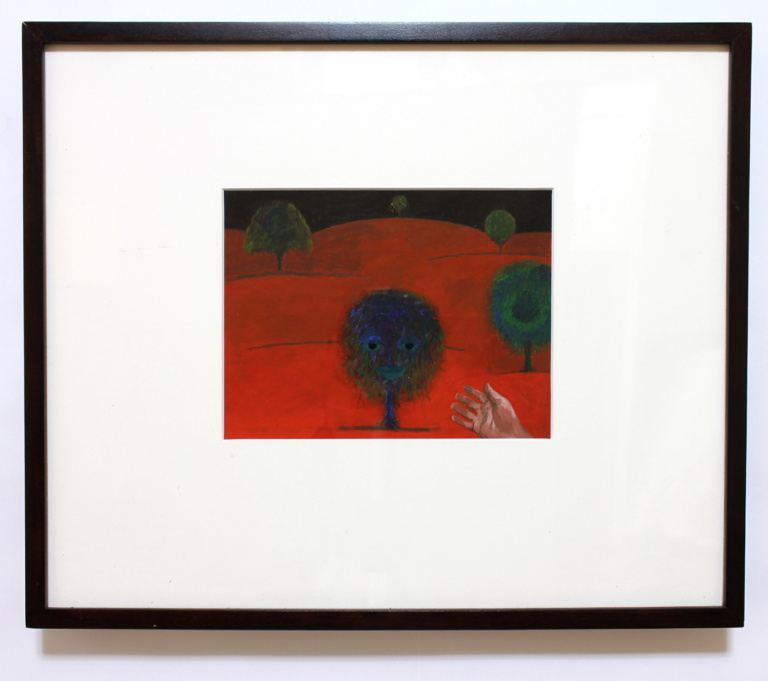
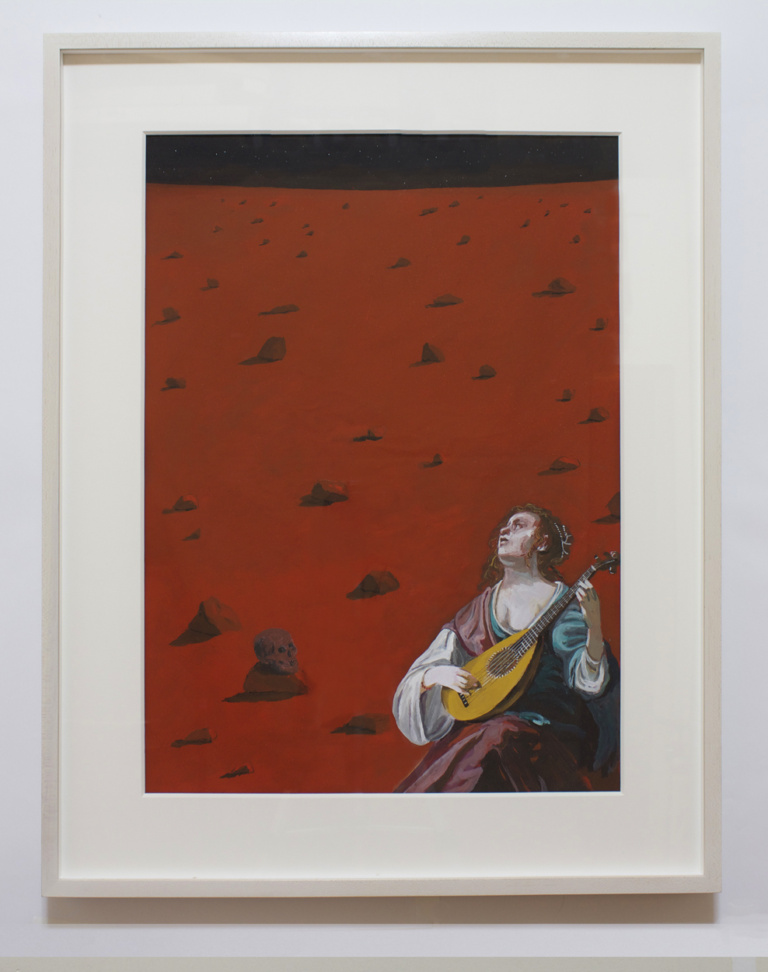
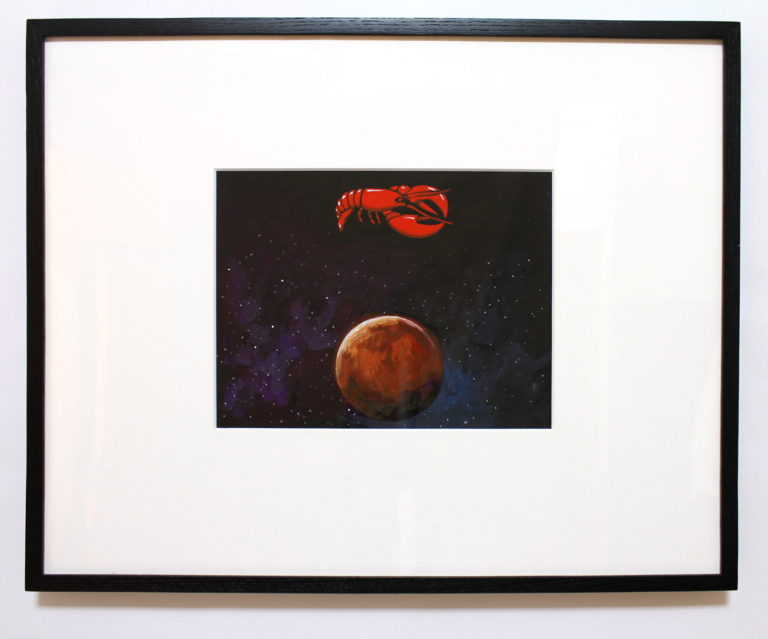
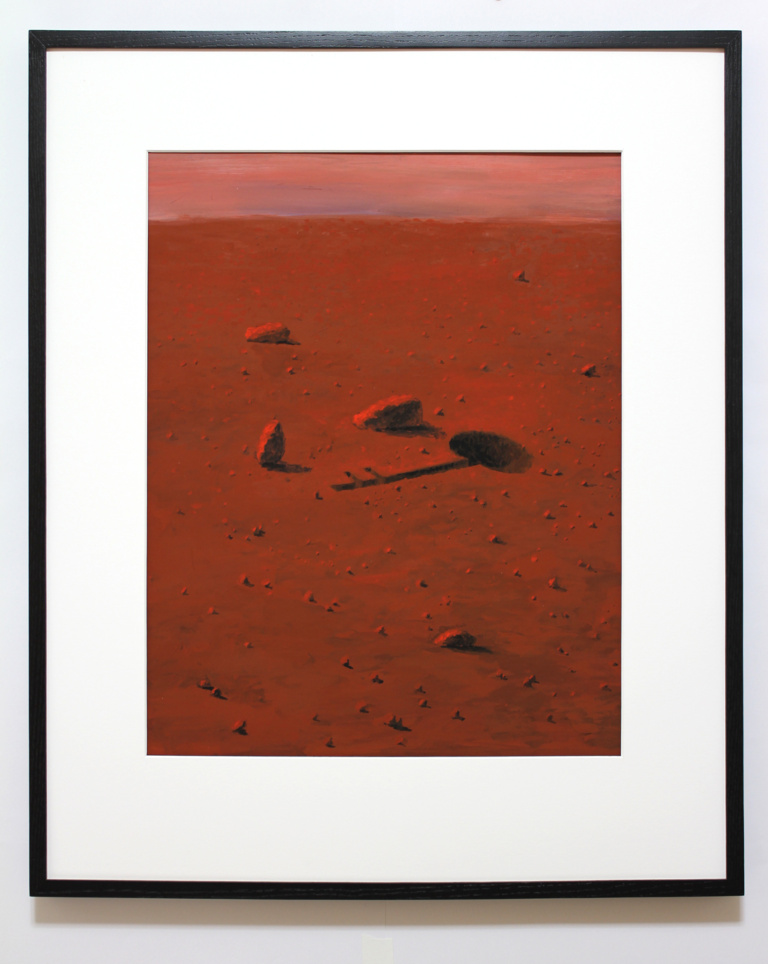
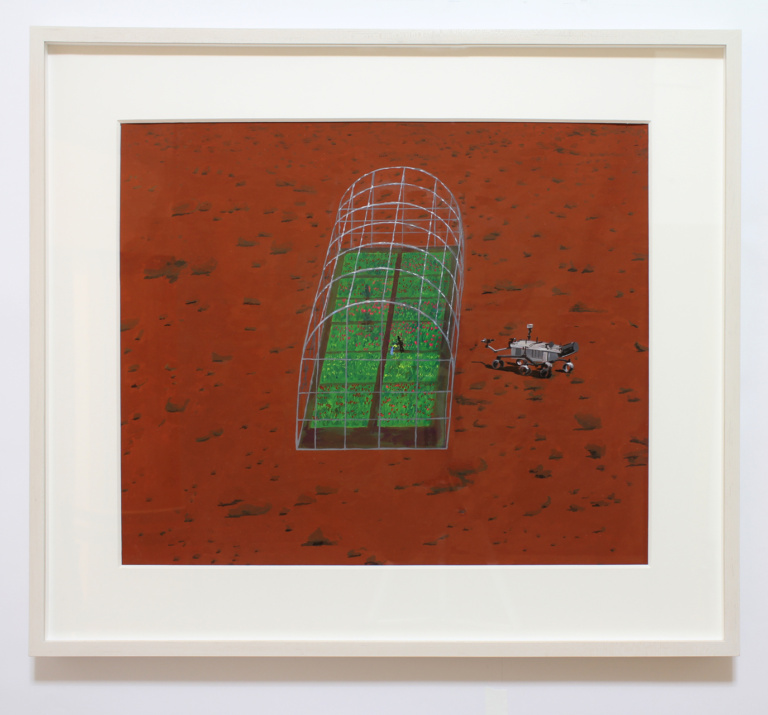
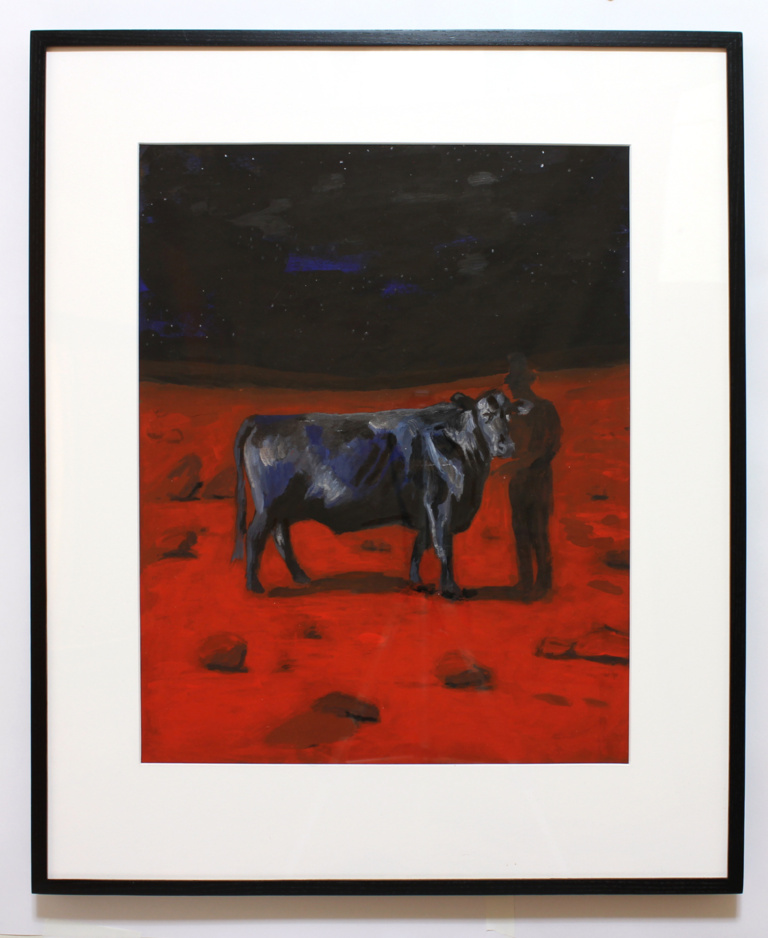
HABITABILITY IS AN INTERSECTION
Space, like art, has long been a site for humanity’s questions about the unknown. Throughout history, art has been aligned with spiritual beliefs and religious institutions; with progress and power. Throughout my artistic practice I have explored the many connections and collaborations between art and spirituality, religion, and the unknown. In 2018, I made a group of paintings called the “Mars Works,” which were exhibited at the CBSRZ Synagogue in Chester, CT. What drew me initially to this synagogue was that it was designed by the well-known conceptual artist Sol Lewitt, who made cold, analytical, and process based art, and who I had not known to be a religious person. I visited the building and spent some time thinking about the intersection between the formal decisions in the architecture and their effect on the everyday social experiences of the congregation.
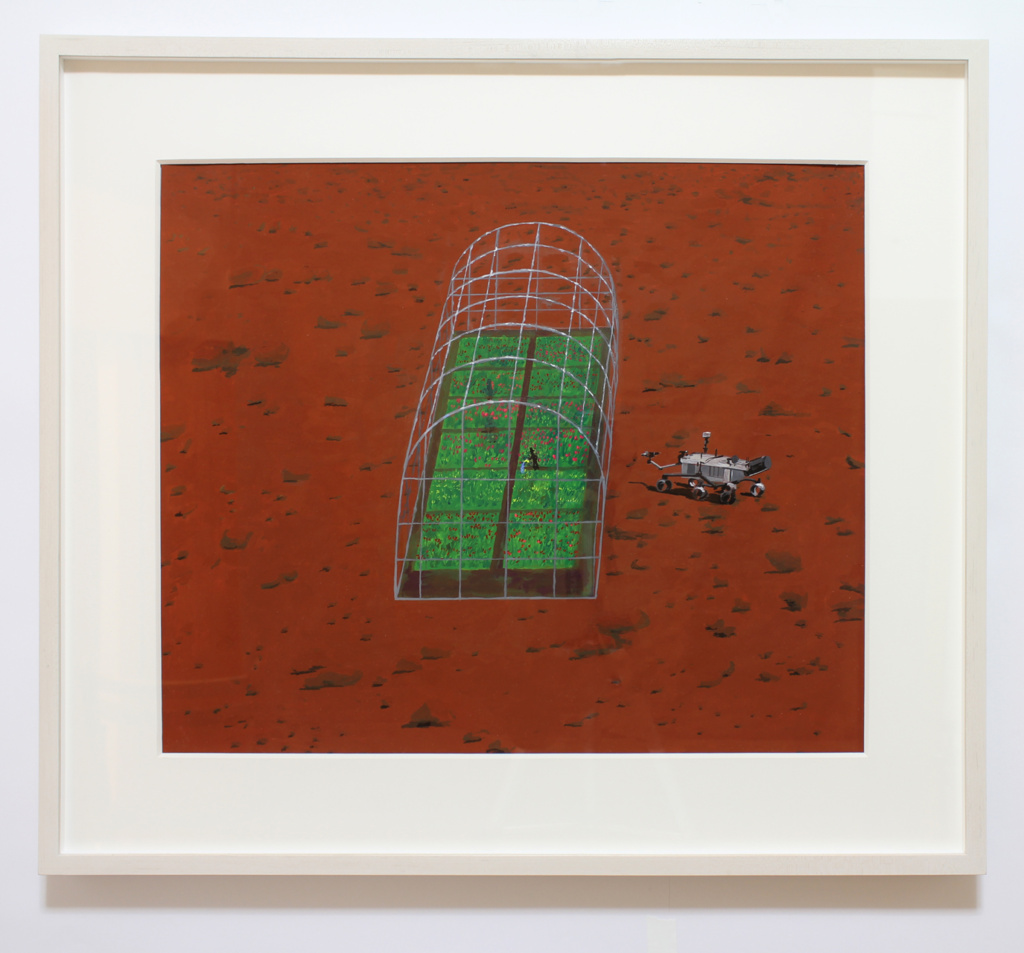
The idea for the show developed out of this overlap between aesthetic and religious principles. I also recorded an interview with the congregation’s Rabbi, where we discussed some of these connections. The Rabbi told me about her brother’s PHD thesis dissertation, which was exploring ideas about how Jewish beliefs and rituals could translate to life in space and on other planets. This dissertation took a practical approach to every day Jewish questions—how to keep kosher? How to observe the Sabbath when there is no 7-day week? The premise of the “Mars Works” is to illustrate some of the logistical problems brought up in the dissertation—taking on a visual language similar to that of pulp science-fiction books from the 1950s. The works are overt about their criticality, often conflating serious propositions on what we might “need” to survive on Mars with absurdist or ironic solutions.
One work, titled “Transfer of the Western Wall,” depicts the holy site being moved brick by brick from Jerusalem to the surface of Mars with a giant crane. Another work shows a greenhouse for cultivating flowers in the middle of a desolate Martian landscape. All of the works in the series focus on non-physical aspects of survival. What does it mean when the context of a religious practice is radically shifted? What does it say about how we project meaning onto symbols? Many of the themes in this body of work began to be largely explored in the early Renaissance, a time when science, art, mysticism, and religion were rapidly challenging and cross-pollinating each other, and where a discovery in one area could unlock progress in another. This was also when we first began to see and understand other planets. An artwork is a site or meeting place for ideas that have not yet congealed into practical solutions for humanities problems. We must first envision something before being able to attain it.
